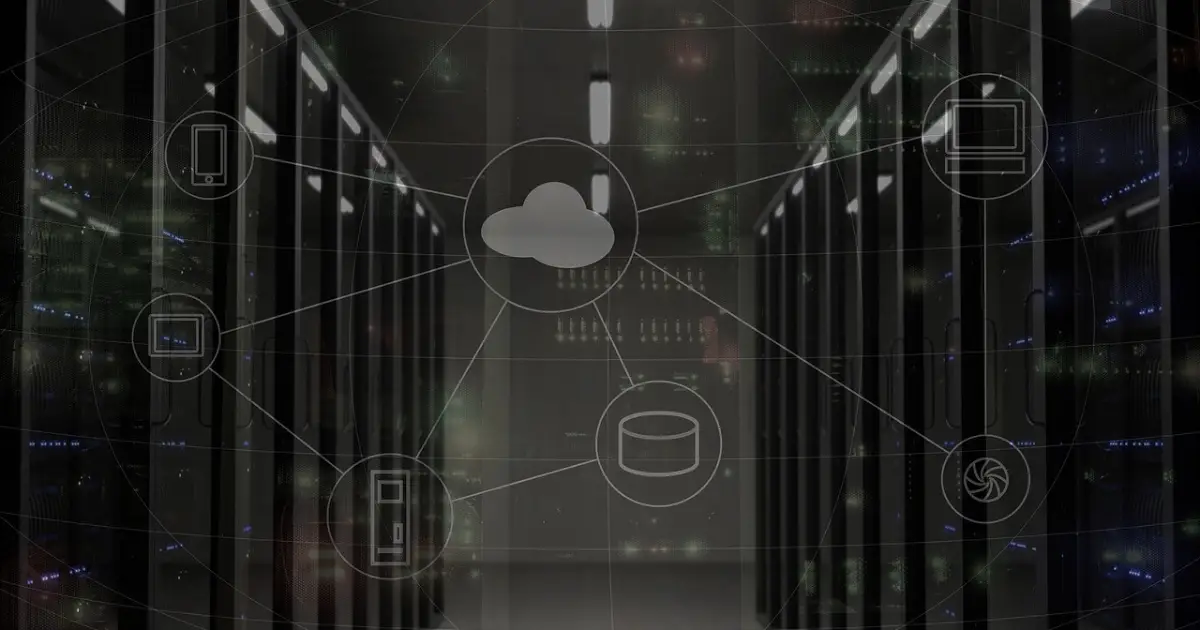focus notes


What is the average system development cost? Explaining how to reduce costs, success points, subsidies, etc.

table of contents
“How much will it cost to develop the system?”
“I want to know how to reduce system development costs!”
When thinking about system development, many people may be concerned about cost. In conclusion, system development costs cannot be determined simply.This is because it varies greatly depending on the operator, number of functions, wishes, etc.
In addition, if you request installation support and subsequent maintenance, the costs are expected to increase further. If so, you may be wondering how to keep costs down.
In this article, we will not only explain the basic costs of system development, but also explain in detail how to reduce costs, key points for successful system development, and subsidies.
By reading this article, you will be able to understand the rough cost and breakdown of system development costs. If you are worried that you would like to develop a system, but have no idea how much it will cost, please refer to our services.
What is the average cost of system development? Explanation by type
We will introduce the average cost of system development by two types below.
- core system
- cloud system
core system
A core system refers to a system that manages operations and information that are the backbone of a company.Specifically, it is a system that helps to streamline operations such as sales management and inventory management. It is generally said that the cost of developing such a system ranges from tens to hundreds of millions of yen.
To find out the average cost of system development, it is best to get competitive estimates from multiple system development companies.
cloud system
It is difficult to say exactly how much it will cost to develop a cloud system.Generally, it is said that it costs from several hundred thousand yen to several million yen, but it is difficult to make a general statement because the cost varies depending on the content and scale of the service.
Furthermore, when developing a system from scratch, whether it is core or cloud, costs tend to be high. Having a sufficient budget is also an important point in system development.
Explaining the breakdown of system development costs
The breakdown of system development is as follows.
- Personnel costs of those involved
- Requirements definition cost
- design cost
- Test operation cost
- Installation cost
- License fee
- support cost
Personnel costs of those involved
Personnel costs for the parties involved account for the majority of costs in system development.The people involved in system development include:
- WEB director
- Project manager
- engineer
- programmer
- designer
In addition to the above, many people are involved in developing the system, including office staff who assist managers. The larger the project, the more people involved, which may be one of the reasons why it is said that the larger the scale of system development, the higher the cost.
Requirements definition cost
Requirement definition costs are the costs incurred when considering the functions and general policy required for system development.The following may be mentioned.
Organizing development objectives
- Creation of system usage flow diagram
- Identifying functional requirements
- Identifying non-functional requirements
Organizing the development purpose and identifying functional requirements are necessary steps to define requirements by interviewing the client. Determine why you need the system in the first place and what functions the system should have.
On the other hand, a system usage flow diagram is a document that creates a flow chart of how the client will use the system, visualizing what kind of system will actually be created.
Requirement definitions serve as standards for development, so there may be cases where we spend time listening to them. Similar to personnel costs, costs are basically determined by the number of days required to define requirements and the number of personnel. The more time it takes to define the requirements, the more expensive it will be to define the requirements.
However, in order to find out from the client what functions the system requires and what kind of problems they want to solve, sometimes the opinions of experienced engineers are necessary. Even if it costs more, it is considered a necessary expense to correctly define the requirements.
design cost
This is the cost of internal and external design.This can be said to be an indispensable expense as it is the cost of creating the infrastructure necessary for system development, such as servers and applications.
Internal design is the process of thinking up and specifying the mechanisms required to actually operate the system. In the development step of "development and programming," programmers proceed with programming based on the design documents established in the internal design.
We will decide in detail how to set it up and how the program will work. In the cost breakdown, it is often recorded as expenses such as ``basic design/detailed design.''
External design involves designing the parts that will catch the eye of the client, such as servers, hardware, and operation screens. Since we consider not only functionality but also design and ease of use, the more elaborate the design, the higher the cost tends to be.
In the cost breakdown, in addition to external design, "UI design/database design" etc. are often included. This is basically a process of creating the basic parts necessary for development, so the cost is equal to the number of processes.
Test operation cost
Test costs can be broadly divided into two parts.Generally, it looks like this:
- Identify test items and create a test plan
- Execute the test based on the test plan
First, it costs money to identify the test items required for the system and create a test plan. The more features a system has and the higher the level of development, the more tests will be required and therefore the more expensive it will be.
Basically, repeat the following four tests until the problem is solved.
| test name | Content |
|---|---|
unit test | A test to start one program and see if it works properly. |
Combined test | Test to see if it works properly when multiple functions are linked |
system test | Testing to confirm operation in a realistic operating environment |
Operational test | Tests conducted by the ordering party to confirm that the required functions are implemented |
In some cases, the calculation unit price varies depending on the person performing the test. Therefore, some companies may be able to reduce testing costs.
Installation cost
This is the cost involved in installing the system.For example, the following support could be considered:
- data migration
- Initial setting
- Manual Creation
The cost of implementation will naturally vary depending on the level of support you request. However, implementing a system tends to involve many changes, such as overhauling existing work flows. If the system implementation is not smooth, it may take time to get used to the new work flow using the system.
If you don't have employees who are familiar with the system or IT tools, support costs should be considered a necessary expense. By utilizing it as much as possible, you can achieve a smooth implementation.
License fee
License fees in system development are the fees paid to obtain the right to use software and tools used during the development process.Examples of licenses that may be used include:
- Development Tool License
- Framework and library licenses
- Server and infrastructure licenses
- Third-party API licensing
These license costs vary widely depending on your project requirements and the technology you choose. In some cases, it may represent a significant portion of development costs. It is important to properly evaluate and account for these costs in project budget planning.
support cost
This is not support at the time of implementation, but support costs after operation has begun.Some companies may list ``operation and maintenance costs'' instead of support costs. Examples of support include:
- Technical support
- Training related support
- Customization related support
- Maintenance related support
- Backup Support
The above are examples of important support to improve the quality and sustainability of system development. We recommend that you select the support services you need according to the characteristics of your project and your budget, and ensure the appropriate level of support.
From the above, when it comes to system development, it is necessary to consider costs not only from the development side, but also from the operational stage. It is important to have sufficient cash flow to be able to deal with any problems later on.
Competitive estimates and more! How to reduce system development costs
There are two main ways to reduce system development costs.
- Narrow down the features you need
- get a competitive quote
Narrow down the features you need
When developing a system, narrow down the functionality you need.By narrowing down the functions, you can reduce development costs.
It will be easier to understand if you compare the number of functions of the system you are developing with 1 and 100. If each feature costs an average of 100,000 yen, that's a difference of 9.9 million yen. Although this is an extreme example, you can understand the importance of narrowing down the functionality. If you want to keep development costs as low as possible, it's a good idea to narrow it down to only the necessary functions at first.
If you want to narrow down the functions, we recommend using the following method.
- Clarifying on-site needs
- Define requirements strictly
By confirming the needs in the field, you can clearly see your goals. As a result, you will be able to see the functions you need to some extent.
Then, strictly define the requirements, necessary functions, and target values for the set goals. You should be able to narrow down the features further. By setting specific target values, you may be able to get the vendor to re-propose the functions you really need.
If you do this, you will be less likely to end up adding unnecessary features compared to if you start the project off without a hitch. This will also reduce the final cost.
get a competitive quote
We also recommend getting competitive bids from multiple system development companies.By getting quotes from multiple companies, you can check the market price for system development.
Even for the same system development, the required costs often vary depending on the company. Averages can give you a rough idea, but not all companies will propose the same costs. If you choose the vendor that offers the lowest price from multiple estimates, you will be able to reduce system development costs.
However, it is important to note that the vendor offering the lowest cost may not necessarily be the best vendor. In some cases, although their technical capabilities are not high, they are able to keep costs low. If you choose a vendor based solely on cost, you may end up needing to rebuild your system, which could end up costing you more money.
Therefore, instead of choosing based only on cost, consider their past performance and support when choosing. Even if you don't have as much cost savings as the cheapest vendor, you may find one that exceeds your expectations based on overall evaluation.
Explaining the key points for successful system development
The following two points are important for successful system development.
- Clarify the purpose of system development
- Choose a system development method that suits your company
Clarify the purpose of system development
First of all, it is important to clarify the purpose of system development.By clarifying your purpose, you can clearly communicate what kind of system you want.
For example, suppose we have the following two requests.
- I want to develop and introduce a system to increase productivity.
- I want to develop and introduce a system to automate the issuance of invoices.
In purpose 1, the big purpose is clear, but it is not clear what to do to achieve it. On the other hand, for purpose 2, you can see that all you need to do is identify and develop the functions necessary to automate the issuance of invoices.
It is the system developer who thinks about what kind of mechanism is actually needed. It can be said that what is required of the client is to clarify things like ``what and how they want to change.''
If you are unable to clarify your objectives on your own, discuss them with management, site managers, and other personnel to clearly define your objectives.
Choose a system development method that suits your company
It is also important to choose a system development method that suits your company.This is because there are multiple system development methods, each with different features and benefits.
For example, system development methods include the following:
| Development method | Features |
|---|---|
waterfall model | Easy to manage progress |
agile model | Strong against specification changes and mid-course modifications |
In the waterfall model, each phase is a linear, sequential development method, so one phase must be completed before moving on to the next. There is usually no overlap between phases. This makes it easy to manage progress. It is suitable for projects with clear requirements and few expected changes.
Agile models, on the other hand, repeat small releases over short development cycles. This makes the project flexible and easy to make changes along the way. It allows you to incorporate customer requests quickly, making it suitable for projects where requirements can change frequently.
As you can see, there are many different methods for system development. The method you use may determine whether you will be successful or not. It is essential to choose the system development that is best suited to your company and the vendor that will make the best proposals.
Please note that more specialized knowledge is required in this regard, so it is necessary to discuss this in detail with the supplier and the person in charge at your company. You should make a comprehensive decision, taking into account not only the cost, but also the schedule and feasibility.
Subsidies and more! Frequently asked questions regarding system development costs
We will answer frequently asked questions about system development.
- What is the monthly unit price?
- Please tell me about subsidies and subsidies that can be used for system development.
- Please tell me about the system development process.
What is the monthly unit price?
The unit price for one person working for one month is called the ``person-month*unit price.''
*Man-month refers to the amount of work that would take one person one month to complete.
For example, if Mr. A's monthly wage is 500,000 yen, and Mr. A works for one month, the remuneration that the employer will pay to Mr. A will be 500,000 yen. The key is each person's labor costs.
In system development, the cost per person/month varies depending on the scale and complexity of the project and the skill level of the personnel involved. Be careful when comparing rates per person/month for different projects and teams.
Please tell me about subsidies and subsidies that can be used for system development.
The subsidies and subsidies that can be used for system development are as follows.
Manufacturing Subsidy Manufacturing Subsidy Supports new product and service development by small and medium-sized enterprises, capital investment for process improvement, etc. Subsidy amount (in principle) 1 million to 10 million yen Subsidy rate: 1/2 for small and medium-sized enterprises, 2/3 for small-scale enterprises
IT introduction subsidy Support for small and medium-sized enterprises to introduce IT tools to improve back office efficiency, etc. Subsidy amount: 300,000 to 4,500,000 yen Subsidy rate: 1/2
Sustainability subsidy: Support for market development by small businesses, etc. Subsidy amount ~ 500,000 yen Subsidy rate 2/3
Source: Ministry of Economy, Trade and Industry | Towards digitalization of small and medium-sized enterprises | Page 13 (as of January 10, 2024)
Why not use subsidies wisely to reduce the cost of system development? Let's actively collect and utilize information.
Please tell me about the system development process.
The system development process varies depending on the method, but the following flow is typical.
- Requirement definition
- Various designs
- development
- test
- Operation
First, define the functions required for the system in the requirements definition. By defining the functions and specifications at the beginning, you can avoid losing direction while developing the system.
Next, internal and external design is carried out using the specifications defined in the requirements definition as indicators. The internal design determines the background processing and data structure necessary for the system to operate, and the external design involves designing the parts visible to the client, such as the hardware and servers.
We develop the system based on the design documents established in the design process. The development stage is where you do so-called programming.
Once programming is complete, test for defects. If the system is released with defects intact, it will not be the system that the customer wanted, so testing is carried out thoroughly.
Once all testing is complete, it will be released and put into operation. Since there will be regular maintenance even after installation, you will likely be working with a system development company for a long time.
For details about the system development process, please refer to the following article.
What is the system development process? Explanation of the different types, such as flow and waterfall model
summary
We have explained the costs associated with system development. System development costs are often not made public, so it is essential to specify your requirements and inquire in order to obtain accurate information.
In addition, system development costs can be reduced by limiting key points. The standard methods of narrowing down features and obtaining competitive quotes will help reduce costs.
However, there are many preparations to be made before developing the system. When identifying issues in your company, it may be difficult to do so while doing your daily work. In that case, please feel free to contact us.
Achievements left behind
48 years since its establishment.
We have a proven track record because we have focused on what is important.
It has a long track record in both the public and private sectors.
Number of projects per year
500 PJ
Annual number of business partners/customers
200 companies
Maximum number of trading years
47 years
Total number of qualified persons
1,870 people






